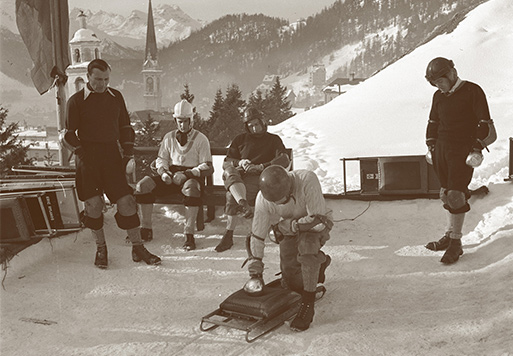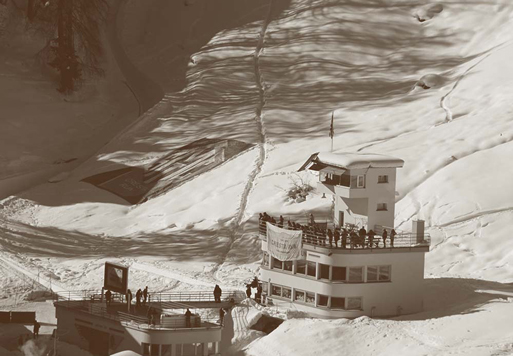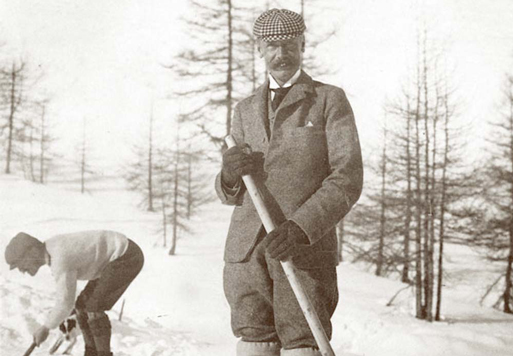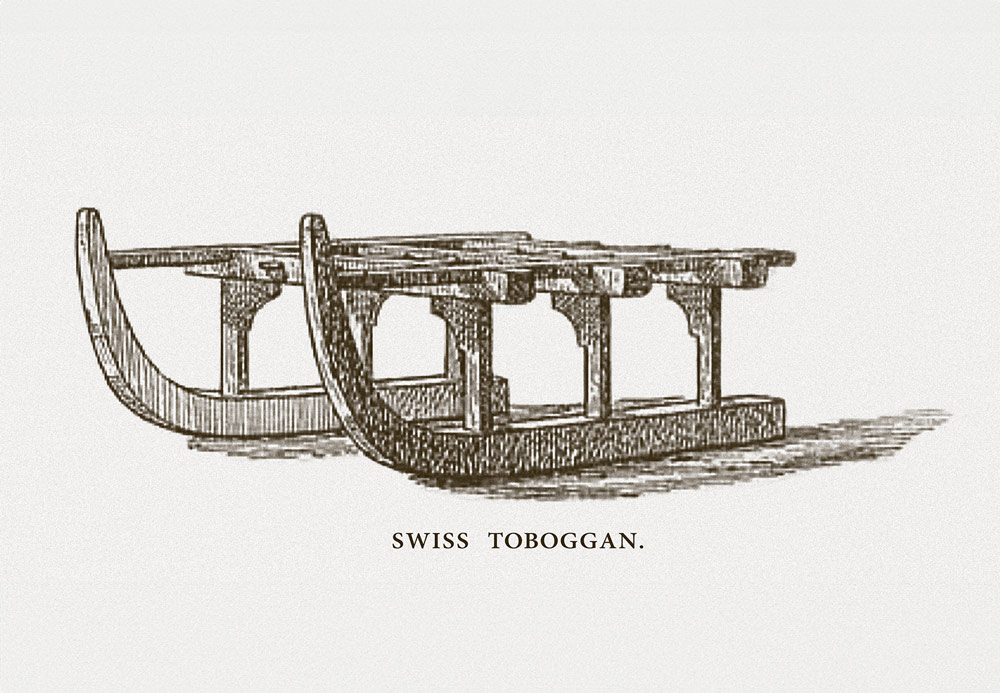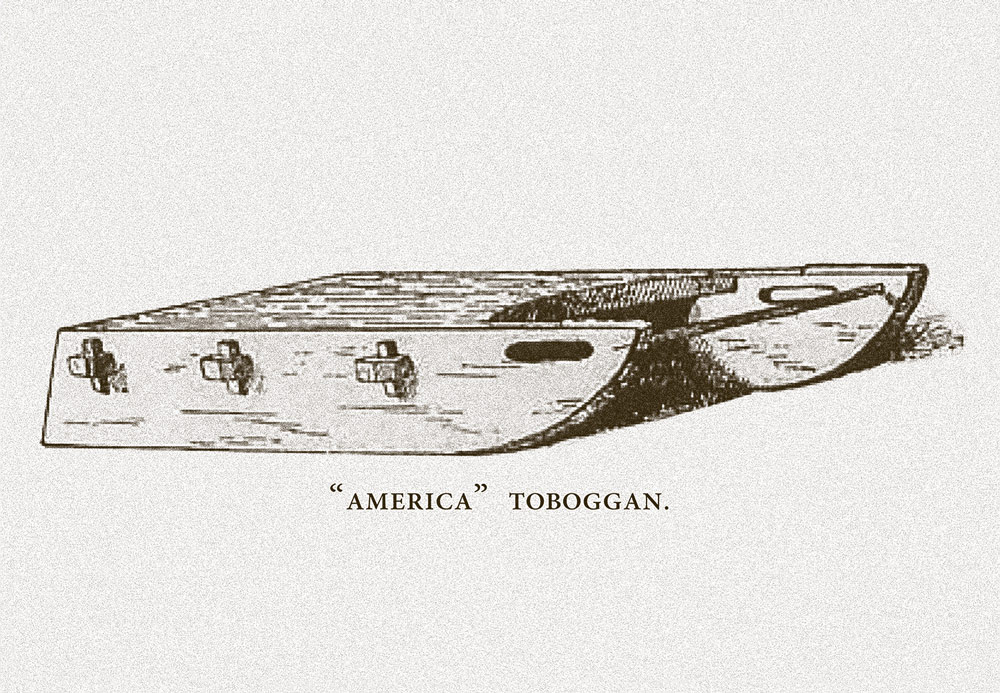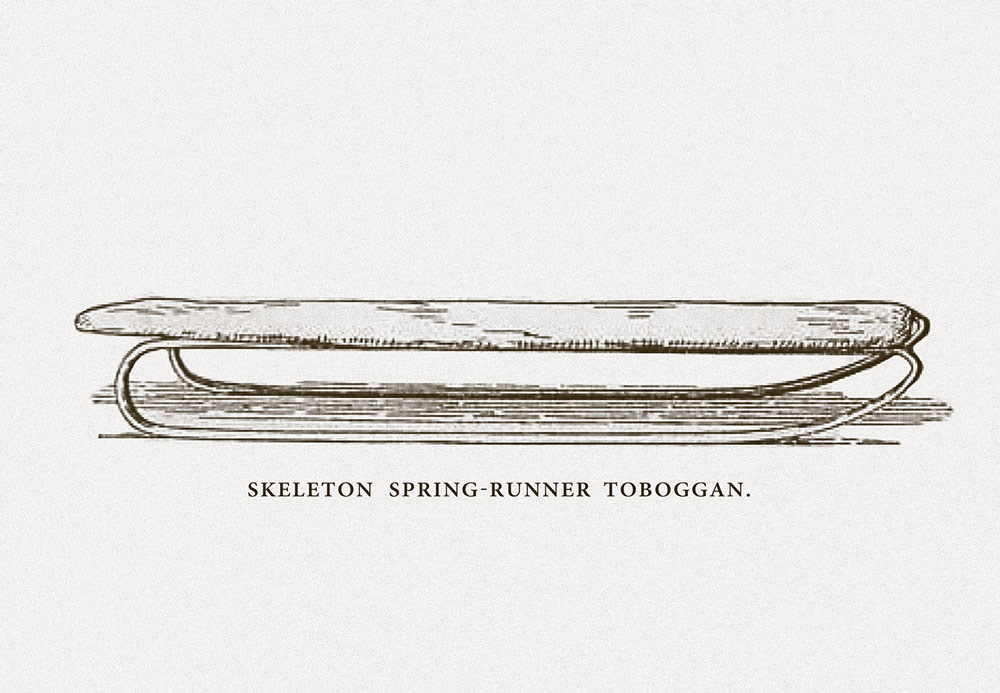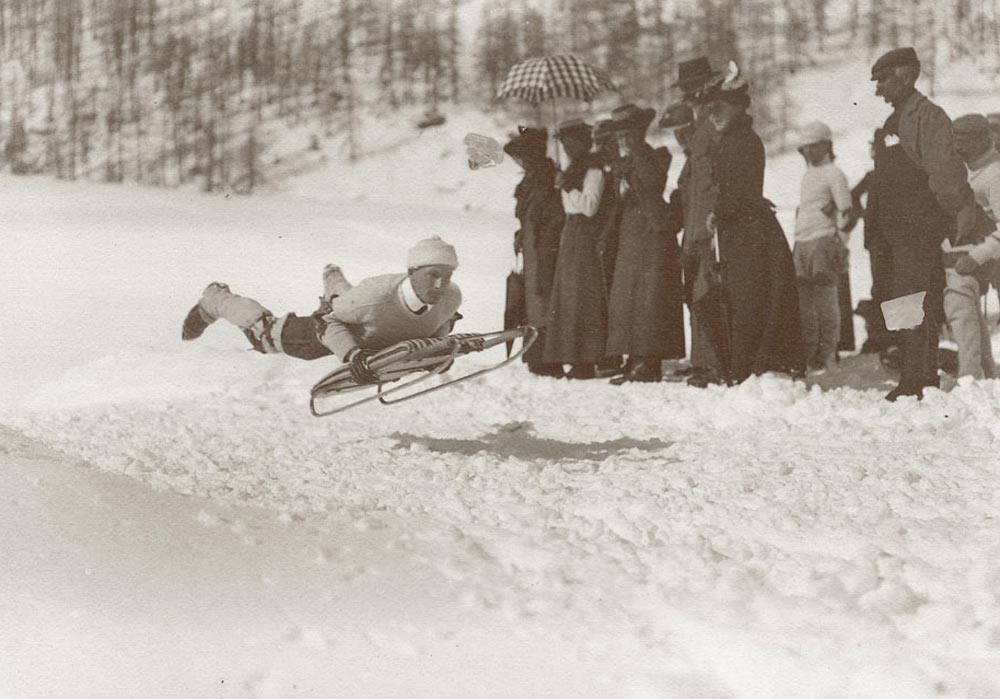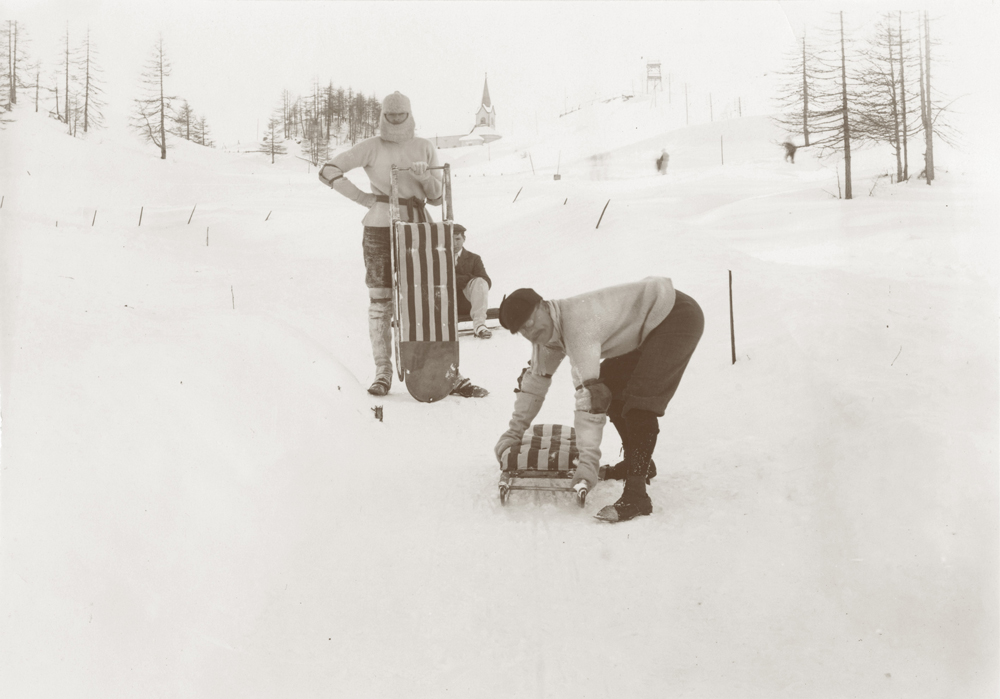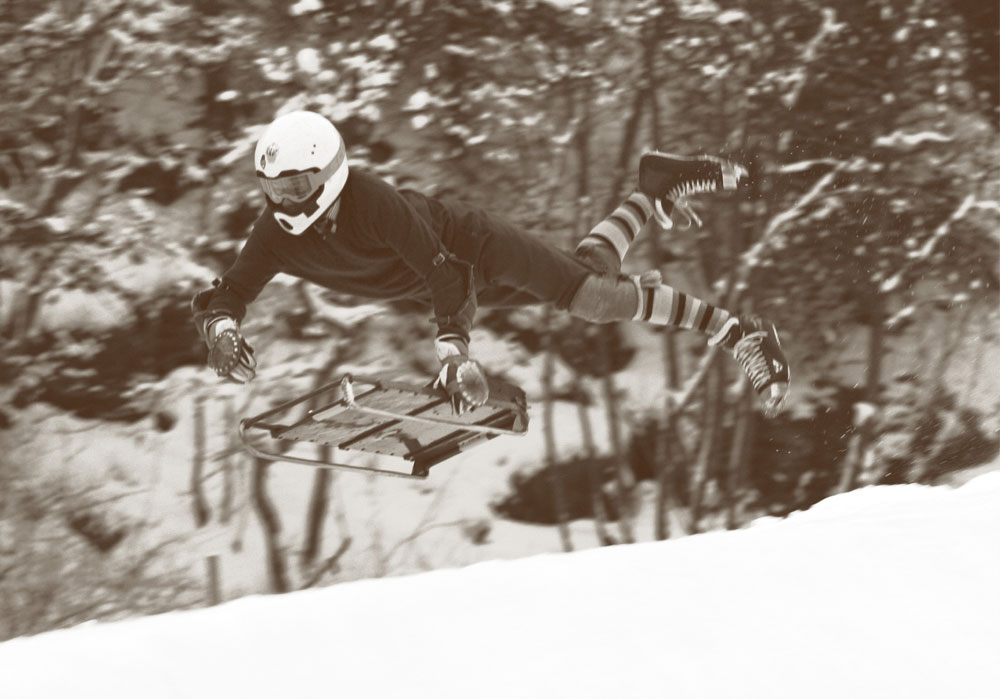THE
A SENSATION MADE OF ICE
At the top: high tension. And at the bottom: A huge sigh of relief. Between the two: Thrills on a unique competition venue. Since 1885, daredevils have been charging headfirst down the Cresta Run, the steep ice canal between St. Moritz and Celerina. It is not unusual for people to become “high flyers” here: In famous curves like the Shuttlecock, they sometimes lose contact with the ground – or rather the mirror-like ice under the runners of their skeleton.
And the Skeleton? Cresta is the original form of this sport. This means that the Cresta Run is the mother of both Skeleton and Cresta. On the Cresta Run the riders ride on their stomach and head first, steering with the use of their bodies and steel spikes on special shoes. And this sport is practised here on the Cresta Run, which is formed anew every year from snow and ice, and passion… Passion for speed, for tradition and for the sensational.
FACTS & FIGURES
Start — 1879 m.a.s.l.
Finish — 1738 m.a.s.l.
Height difference — 157 m
Track length — 1214 m
Average gradient — 12,9 %
Maximum speed — 140 km/h
THE CRESTA RUN
THE CRESTA RUN IN 3D
SUPERLATIVES
— The origin of Cresta and the only competition site for this sport in the world
— The venue of the world’s oldest winter sports competition still in existence (“Grand National”, since 1885)
— One of the last remaining amateur sports
CONSTRUCTION
THE CREATION OF A LEGEND
“The most sporting run in the world”: this is how the Cresta Run was praised as early as 1894, in just its tenth year. The use of the English language is no coincidence: the Cresta Run was initially planned and built by British winter guests, or more precisely: by the five members of the “Outdoor Amusements Commitee of the Kulm Hotel” in St. Moritz.
Through the Cresta Run, these gentlemen not only intend to create a pastime in the form of a sporting competition, they also want to outdo their big tobogganing rival, the town of Davos. And they succeed: The Cresta Run becomes the longest and most challenging track anywhere in the Alps. The track does not follow an existing road course, but is specially formed – year after year – out of the winter landscape.
Even today, the Cresta Run is built over several weeks and is usually opened during Advent. As in the early days, the “St Moritz Tobogganing Club” is responsible for the construction, and as in the early days, a well-coordinated team continues to shape the icy sculpture today. First, the lower two thirds of the track are built (from the starting point at the “Junction” to the Finish), then the the upper third (from the “Top” Start to “Junction”) is constructed.
THE EVOLUTION OF THE CRESTA SPORT
Timeline
Cresta Run St. Moritz
How did the sport of Cresta and the Cresta Run develop in St. Moritz? The timeline shows important events.
1883
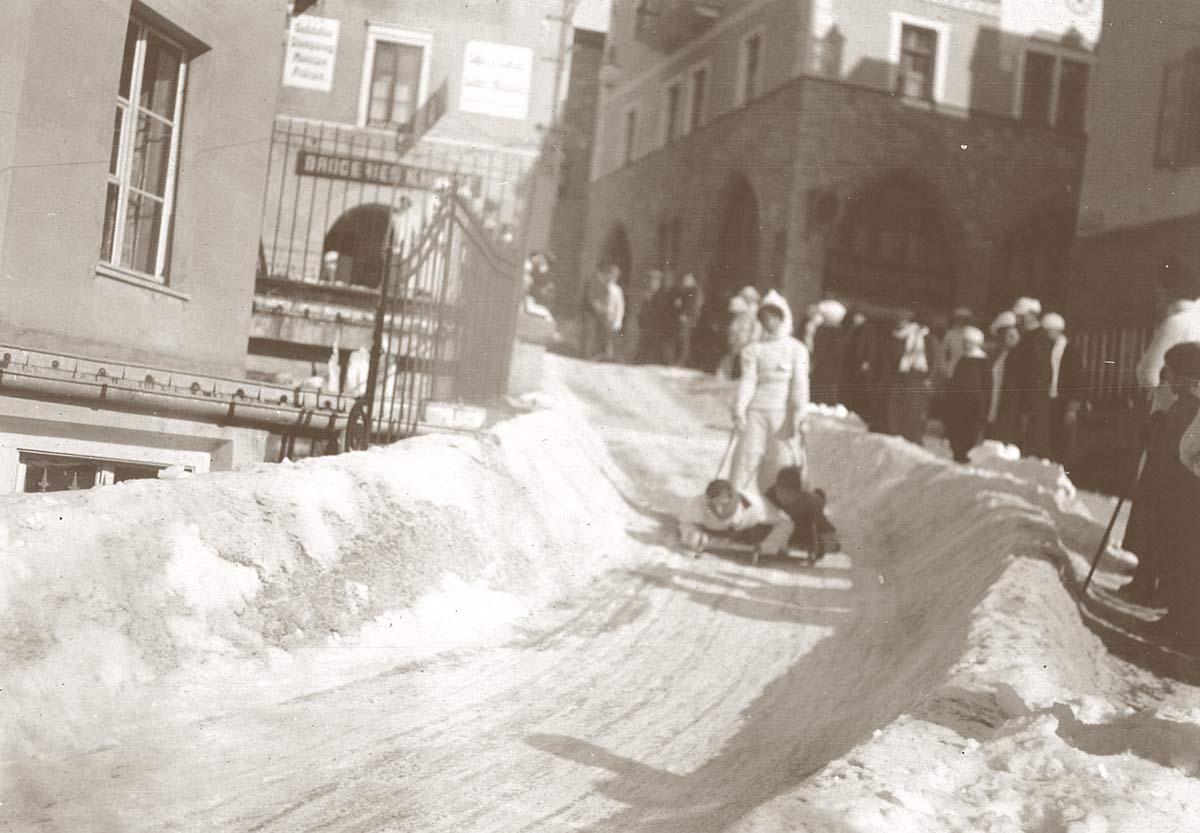
In the early days of tourism in St. Moritz, the first toboggan races were held. Close to today’s Kulm Hotel, up to six tracks were built down to the frozen lake of St. Moritz. Sledding was also enjoyed on various roads, as can be seen here in the picture.
1884

Since 1876, sledding has been enjoyed in St. Moritz on tracks near the Kulm Hotel. Now the so-called “Outdoor Amusements Committee of the Kulm Hotel” plans the construction of a new toboggan run: the Cresta Run.
1885
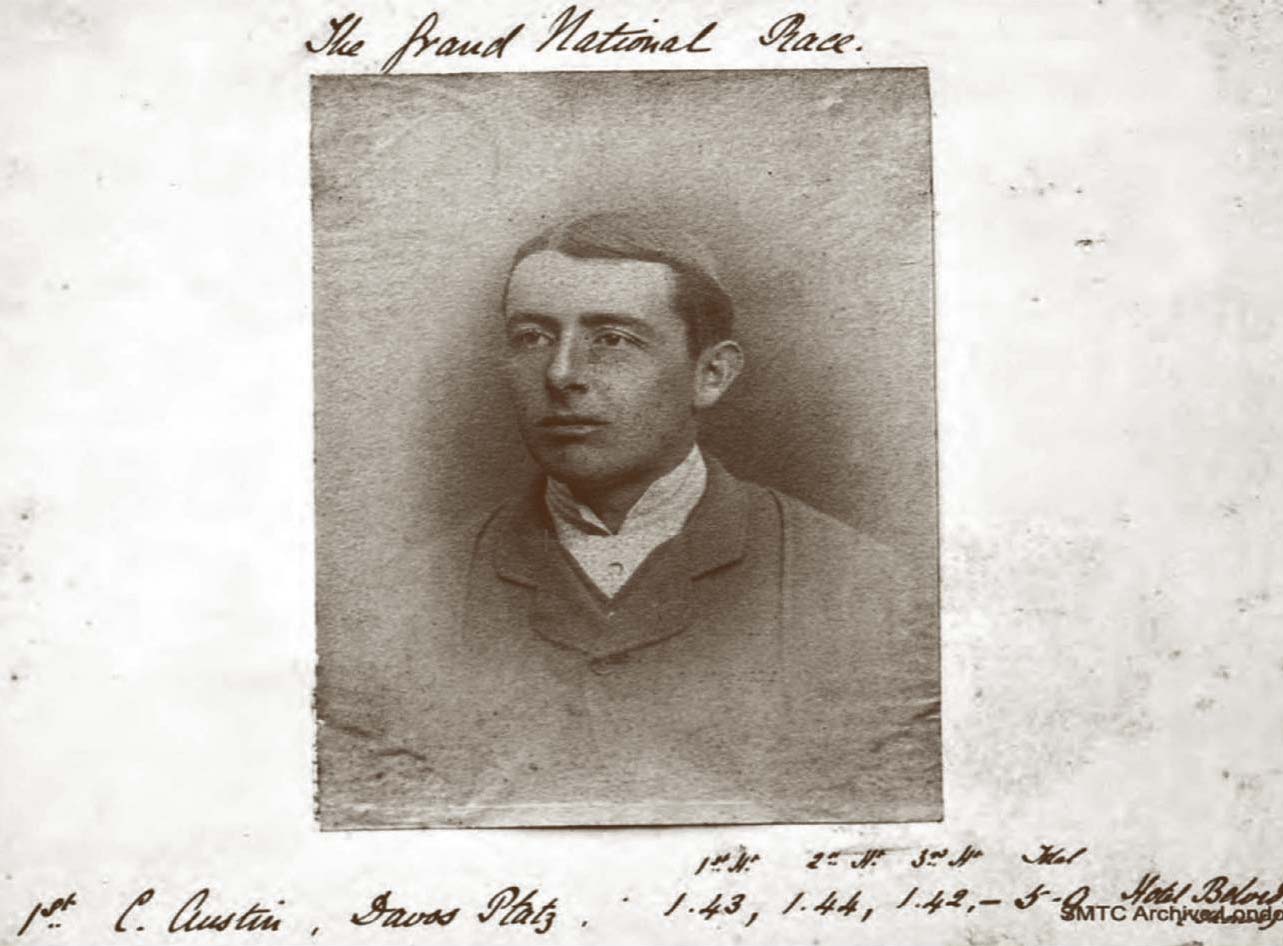
On January 16, the first “Grand National Toboggan Race” takes place on the Cresta Run. The race is still one of the highlights of the Cresta season today – and is considered to be the oldest winter sports competition still in existence. Ten participants from Davos and ten from St. Moritz take part in the first race – each riding a conventional toboggan. The winner is Charles Austin.
1885

The Cresta Run is opened after several weeks of construction. One of its driving forces is Major William H. Bulpett, who becomes a key figure in the sport of tobogganing. He commissioned the first skeleton to be made of British steel (1888), then also the first multi-seater bobsleigh (1889).
1887
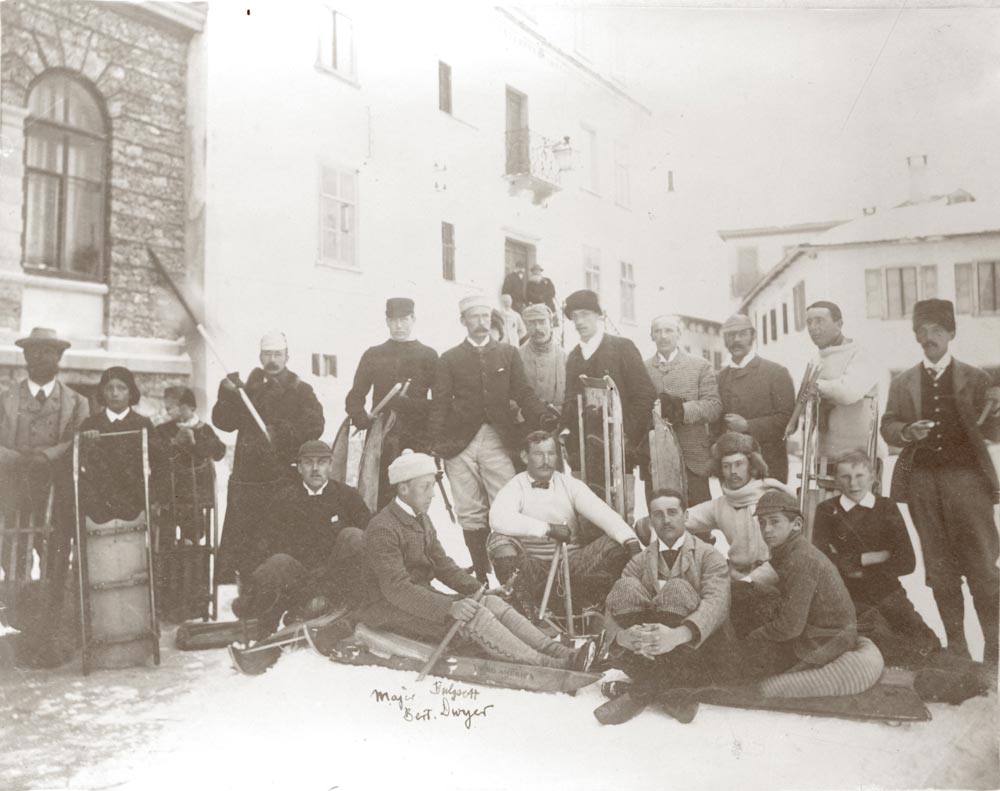
Foundation of the “St Moritz Tobogganing Club”. The club operates and maintains the Cresta Run to this day, and the club language since its inception has been English. In the picture: The winner of a “Grand National Toboggan Race” in the 1890s.
1887
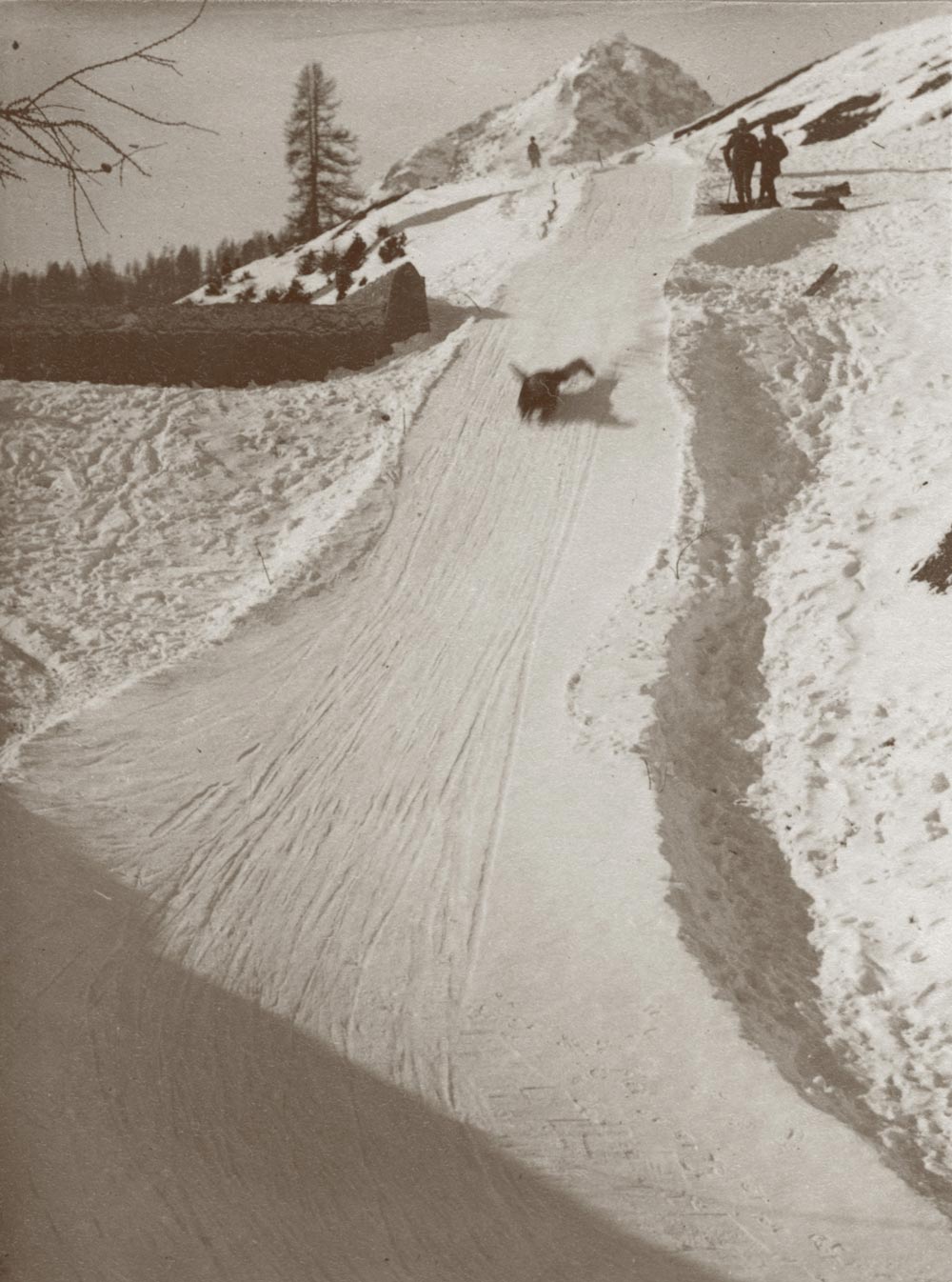
For the first time, the Cresta Run is ridden head first in the “Grand National” – by a certain Mr. Cornish.
from 1887

In addition to conventional sleds, low wooden “Americas” are now used. The first “America” is constructed by L. P. Child, a spa guest in Davos.
1888

Major William H. Bulpett has the first “skeleton frame” sleds built by the St. Moritz blacksmith Christian Mathis – from British steel. The previous wooden side walls of the “America” are eliminated, and the new sled resembles a skeleton.
from 1889
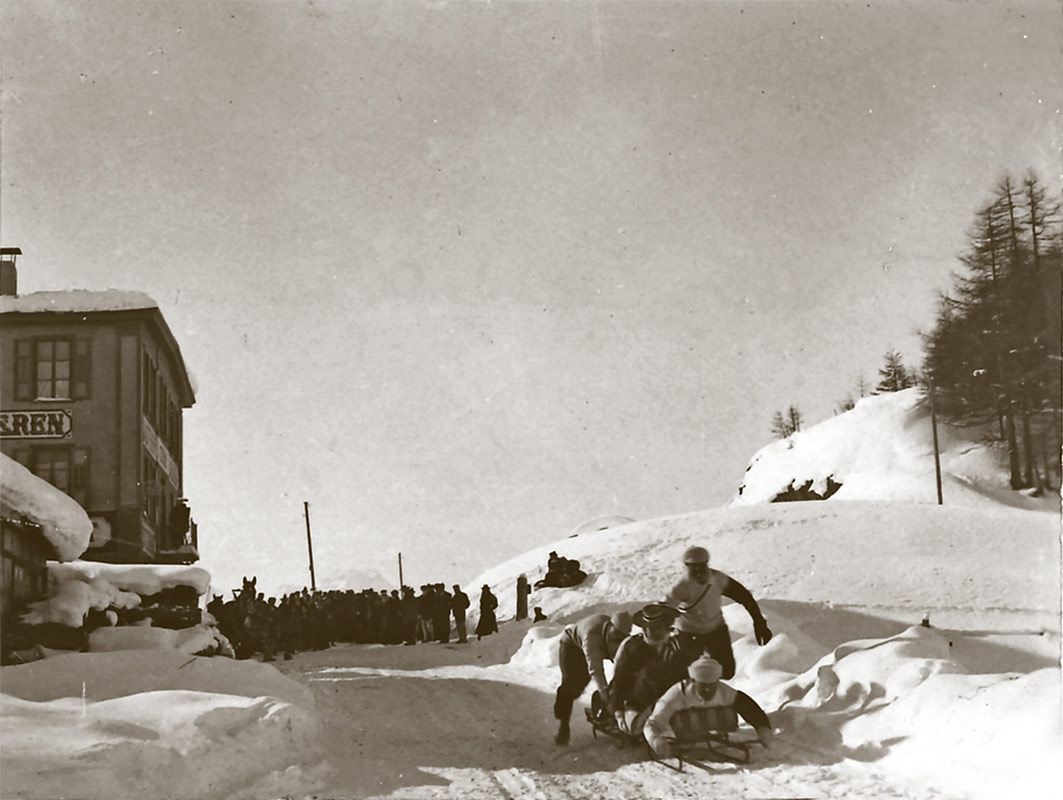
Christian Mathis, a blacksmith from St. Moritz, constructs the first multi-seater bobsleigh by using two skeleton sleds.
1896

The first “Ladies Grand National” is held. Women actively participating in sporting events are not uncommon. In the picture: Ursula Wheble – here riding in a seated position – at the Ladies start around 1900.
1902

The Skeletons receive their distinctive “sliding seats”. The movable seats allow better control.
1903

In St. Moritz, sledding and bobsledding have now been conducted on several tracks and on the snow covered roads for many years. Right next to the road from St. Moritz to Celerina, a newly designed track is built: the Olympic Bob Run, and this still exists today (opened on 1.1.1904).
1907

The Cresta Run is not without danger. During the season, this is confirmed by two fatalities. In the picture: Cresta riders around 1909.
1925

Mrs J.M. Baguley wins the last women’s race to be held for the foreseeable future. Women are excluded from the Cresta sport between 1929 and 2018 because of an alleged risk of breast cancer. Pictured is May Bott, watched by Mrs. J. A. Bott, a pioneer of the Cresta sport.
1928

At the 1928 Winter Olympics, the Cresta Run is the focus of the Skeleton competitions. Pictured: Olympic champion Jennison Heaton in full Cresta gear.
1931
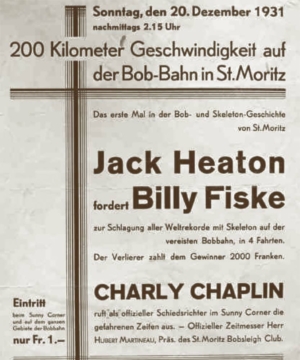
An advertisement in the “Engadiner Post” announces something spectacular: Billy Fiske, the 1928 Olympic champion in five-man Bobsleigh, is to compete against Jack Heaton, the 1928 Olympic Silver medalist in Skeleton, at the Bob Run St. Moritz. The referee is none other than Charlie Chaplin. Jack Heaton wins the duel.
1934

The famous Shuttlecock Club is founded. The club is named after the most spectacular curve of the Cresta Run. Membership is granted to those who loose the control and soar over the edge of the curve due to their speed.
1947
The Frenchman Hirigoyen achieves record time in the Skeleton Championships on the Cresta Run in 1947.
1948
Nino Bibbia shines at the Second Winter Olympics in St. Moritz. The St. Moritz greengrocer with Italian roots wins in the Skeleton. Nino Bibbia later becomes “King of the Cresta Run”, winning well over 200 races.
1950
The Olympic champion Nino Bibbia wins the Swiss Skeleton Championship and the battle for the Heaton Cup, which is contested with international participation.
1952
The sport for young athletes? But not only. In 1952, for example, a 70-year-old colonel plunges himself onto the track “with British composure”. More on this in the film.
1955
Canadian Douglas Connor becomes World Skeleton Champion on the St. Moritz Cresta Run.
1959
Colin Mitchell from England wins on the St. Moritz Cresta Run just ahead of Robert Küderli from Switzerland.
1962
On the Cresta Run in St. Moritz, Hans Küderli becomes Swiss Champion ahead of Nino Bibbia.
1963
Nino Bibbia wins the Swiss National Championship in Skeleton on the St Moritz Cresta Run.
1964

The clubhouse of the St. Moritz Tobogganing Club is built.
1973
The Cresta Run claims its fourth fatality.
1979
The 19-year-old Marcel Melcher from St. Moritz becomes the youngest ever winner of a Cresta race.
1985

The Cresta Run celebrates its centenary. To mark the anniversary, the sculpture “Cresta Rider” by David Wynne is unveiled in St. Moritz.
1998
A portrait of a legend: Nino Bibbia, the 1948 Olympic champion.
2009
For beginners: a Skeleton course on the Olympic Bob Run.
2010
The story of the Cresta Run in Reto-Romansch? It does exist. For the 125th anniversary of the Cresta Run, Romansch Television broadcasts a portrait of the icy legend.
2014
The Canton of Graubünden and St. Moritz celebrate “150 years of Winter Sports”. Of course, the unique Cresta Run is an integral part of this celebration.
2016

A new “Cresta Bar” is opened in London: it is the result of a collaboration between the Kulm Hotel in St. Moritz and the five-star London hotel “The Goring”. The bar is a so-called Pop-Up and will remain in place until February 2017.
2017

Lord Clifton Wrottesley wins the Grand National, the most important race at the Cresta Run, for the 14th time.
2018

“Eleven years with a total of 802 rides (including 12 from the Top), and 17 crashes, and now this victory in the ‘Grand National’, my dream finally came true!”. The words of Nico Juelich after his victory in the “Grand National”, the most important Cresta race.
2018
The British Army has long been associated with the Cresta Run. Given the equality of the sexes in the army, the armed forces call for female army personnel to be allowed to ride the Cresta Run as well as males. The members of the St Moritz Tobogganing Club vote on it: Women will be allowed again – initially for two years – on the Cresta Run.
2019

“You are now a Cresta Rider” – that’s the announcement coming from the loudspeakers at the Cresta Run in February 2019. The newest rider is a woman: Carina Evans. The British woman is the first woman in 90 years to master the Cresta Run from the Top Start. This means that the ban on women riding, which was lifted in 2018, is now history.
2019
In the center of St. Moritz, the construction machines are rolling up: Where the legendary – but dilapidated – Scala Cinema used to stand, a new building is being built with a cinema, restaurant, boutique and the new Cresta and Bob Museum.
2020

The British armed forces were instrumental in bringing the Cresta Run back to life after the Second World War. The Royal Air Force also provides a team for each event, as shown here in a photo taken in 2020.
2023

The Cresta & Bob Museum in St. Moritz opens its doors. A very warm welcome!
RIDE THE CRESTA
Discover your passion for speed, for tradition and for the extraordinary. This is possible on the Cresta Run. Beginners are given precise training by an instructor from the “St Moritz Tobogganing Club” and learn step by step – or rather movement by movement and curve by curve – how to ride the Cresta Run.

